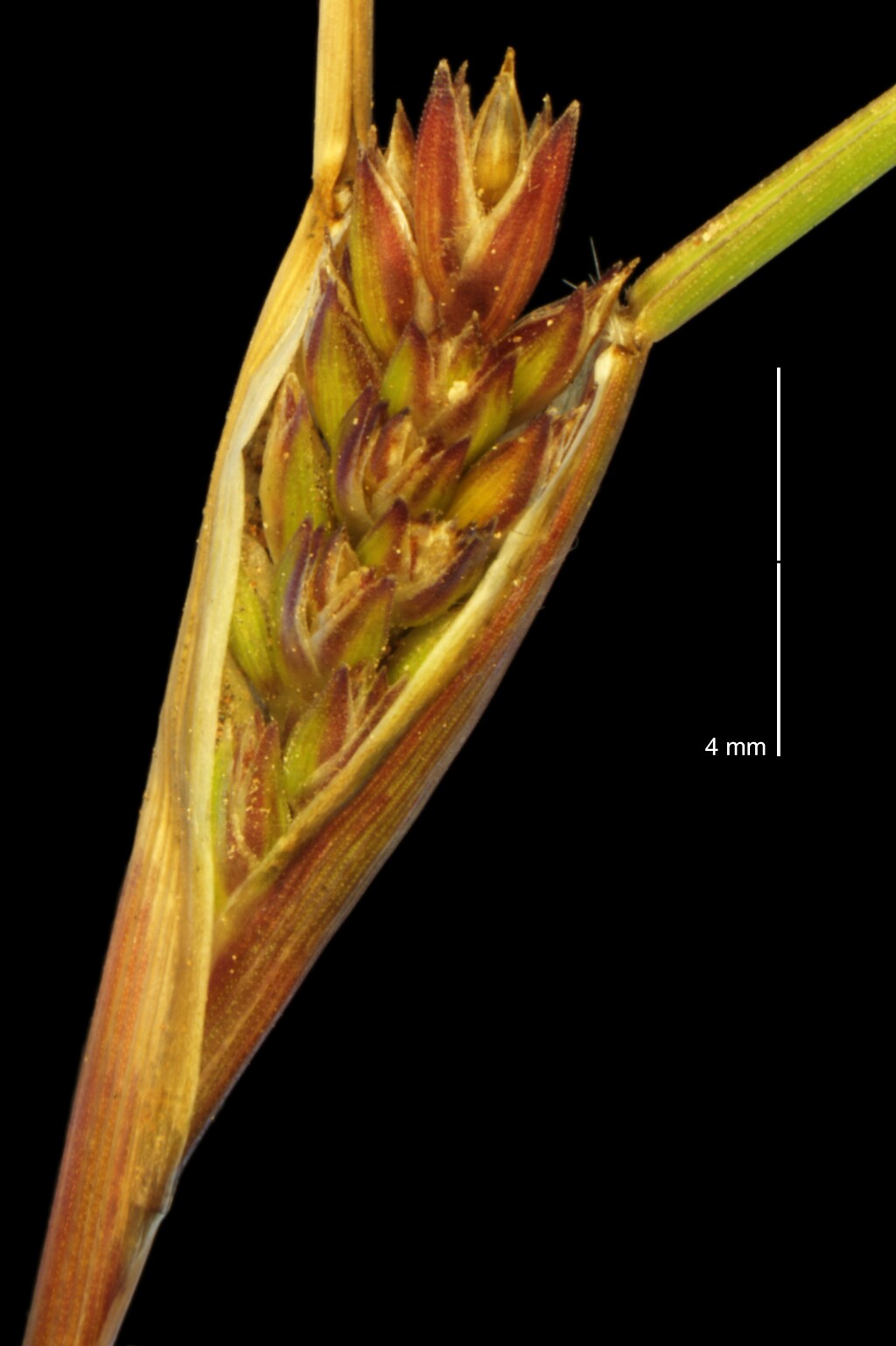Tribolium obliterum
(Hemsl.) Renvoize Capetown GrassTufted annual to perennial, culms geniculate to erect, to 40 cm high but often only a few cm in exposed sites. Leaves glabrous or with scattered, tubercle-based hairs; blade channelled to inrolled, to 15 cm long and 1–2 mm wide; ligule a minute ciliate rim, occasionally with a tuft of longer bristles at the sides. Inflorescence a terminal, cylindric spike-like panicle, often also with 1–3 axillary sessile panicles borne singly from the upper nodes of the culm, 1–3(–5) cm long, 0.4–1 cm wide, occasionally purplish. Spikelets ovate to lanceolate, 3.5–6 mm long, 3–10-flowered; glumes ovate, 2–5 mm long, the upper longer than lower, acute to acuminate, scabrous along keel, otherwise glabrous; lemmas 2–5 mm long, acute to acuminate, sometimes mucronate or very shortly awned, 7-nerved, hairy along the margin with acute or truncate hairs c. 0.5 mm long. Flowers Oct.–Mar.
Wim, GleP, VVP, VRiv, GipP, OtP, WaP, Gold, CVU, GGr, DunT, NIS, HSF, Strz. Also naturalised in WA, SA. Native to the Western Cape in South Africa. Scattered in central to south-western Victoria, often in near-coastal and somewhat saline sites, but occasionally occurring on bare soil in fairly intact native grassland and grassy woodland.
Previously included with the very similar Tribolium acutiflorum (Nees) Renvoize which appears to be much less common in Victoria.
 Spinning
Spinning


